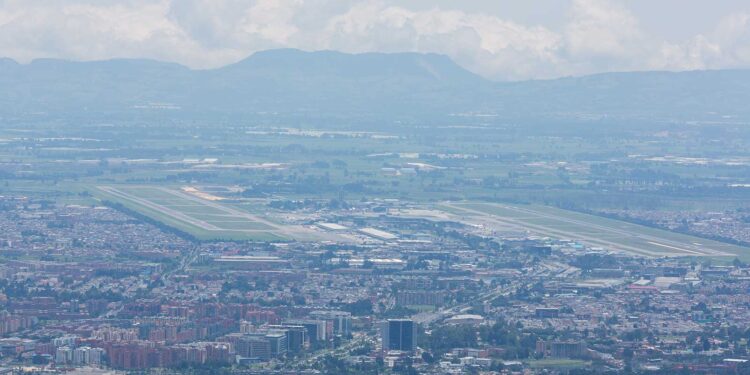Operating to Colombia – Part 2: Permit Considerations

This business aviation blog post continues from our article last week, entitled “Operating to Colombia – Part 1: Airports, Parking, & Slots.”
When traveling to Colombia, you’ll need to consider landing permits as well as overflight permits for surrounding countries. While the landing permit process for Colombia is fairly straightforward, there are particular documentation requirements and procedures to be mindful of. Also, if you are overflying the country, the process for securing an overflight permit is similar to the landing permit.
The following is an overview of what you need to know:
1. Colombian landing permits
Landing permits are only needed for Colombia if you’re staying longer than 48 consecutive hours and/or operating to more than one airport in country. This applies to both private non-revenue and most charter (non-scheduled commercial) operations. Documentation for charter permits is the same as for private non-revenue, with the exception that charter operators must provide their air operator certificate (AOC). Note that special considerations are in place for aircraft that show “charter aircraft” or “public transportation” on their airworthiness certificate. In such cases, operators must always have Colombian landing permits – whether they’re actually flying as a charter or not – or risk having the aircraft impounded.
2. Landing permit specifics
Private non-revenue aircraft of any type may remain in Colombia up to 48 hours without landing permits so long as they do not operate to a second location in the country. For charter aircraft, the 48 hour landing permit exemption only applies for aircraft up to the size of a Bombardier Global or Gulfstream GLF5. As per Colombian Aerocivil (also known as the Civil Aviation Authority ) regulations, larger charter aircraft, including ACJs and BBJs, must have landing permits for each trip regardless of length of stay.
3. Processing permits
Colombian landing permits for processed by Aerocivil, and this agency operates during normal business hours Monday-Friday and closes on weekends and holidays. Official lead time for Colombian landing permits is 72 hours. Short notice permit requests require an absolute minimum of 48 hours and are considered on a case-by-case basis. Be mindful that last-minute weekend requests will usually not be approved. If you plan to operate to Colombia on a weekend, it’s important to file permit requests no later than Thursday of the week prior to your operations.
4. Permit documentation
The following documents must be submitted with any Colombian landing permit request:
- Airworthiness and registration certificates
- Worldwide insurance policy
- Crew licenses and medical certificates
- Aircraft and engine serial numbers (Aerocivil wants the actual numbers noted on the application)
- AOC (for charter aircraft only)
5. Permit revisions
For operations earlier than approved permit window you’ll need to submit a revised permit request, and a new permit number may be issued. For later operations, outside the permit validity window, you only send a change notification. If you have either 1) a route or flight information region (FIR) time change, 2) an origin or destination change, or 3) an aircraft registration change, a revision must be submitted, and a new permit number may be issued. In the case of crew/passenger changes, only a notification is required, and the permit number remains the same. It’s best to allow a minimum of 48 working hours lead time for any permit revision request.
6. Overstaying the 48-hour limit
If you land in Colombia without a permit and decide to stay 48 hours or longer, it’s at Aerocivil’s discretion to approve or disapprove the extension request. If the extension is denied, you’ll need to depart the country and then return. For example, if you reposition to Panama City (MPTO), you’ll be able to return to Colombia without a landing permit for another stay of up to 48 hours. If it’s anticipated that you may stay in Colombia 48 hours or longer it’s recommended to request a landing permit, with appropriate lead time. This gives you additional operating flexibility, in terms of extending your trip, and helps avoid issues of having to reposition.
7. Colombian overflight permits
All overflights of Colombian airspace, including operations over San Andreas Island within the Panamanian FIR, requires an overflight permit. Aerocivil requires three business days to process/confirm overflight permits.
8. Temporary importation for stays of more than five days
Foreign registered aircraft staying in Colombia more than five days require a Temporary Import Permit from customs. Note that this is separate from landing permit requirements. The process to obtain a Temporary Import Permit requires at least 72 working hours. Note that Colombian regulations change from time to time, but it’s currently possible to submit a Temporary Import Permit request on company letterhead. While it’s best to have this letter apostilled, it will usually be accepted without notarization. If you arrive for a planned stay of less than five days, and need to extend beyond the five days, immediately notify your 3rd-party provider or ground handler so they can help secure a Temporary Import Permit while you’re in-country. It will be at customs’ discretion to approve/disapprove this request. You’ll need to leave the country if the requested import permit is not approved.
9. Additional reading: Operating to Colombia – Series Index
Note: Links will be updated as articles are published.
Conclusion
While it’s tempting to operate to Colombia landing permit free, it’s important to be aware of the specific limitations associated with this option. And, don’t forget to include your aircraft and engine serial numbers with each permit request or Aerocivil will not process your application.
Questions?
If you have any questions about this article or would like assistance planning your next trip to Colombia, contact me at markhudson@univ-wea.com.
Stay tuned for Part 3, which covers planning tips for travel to Colombia.



